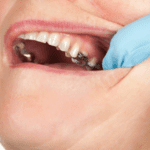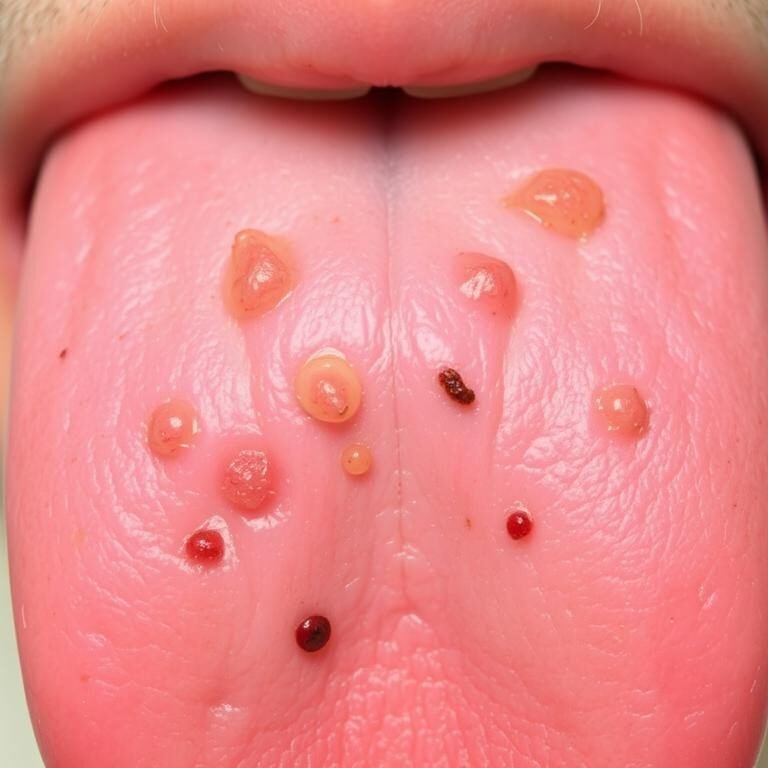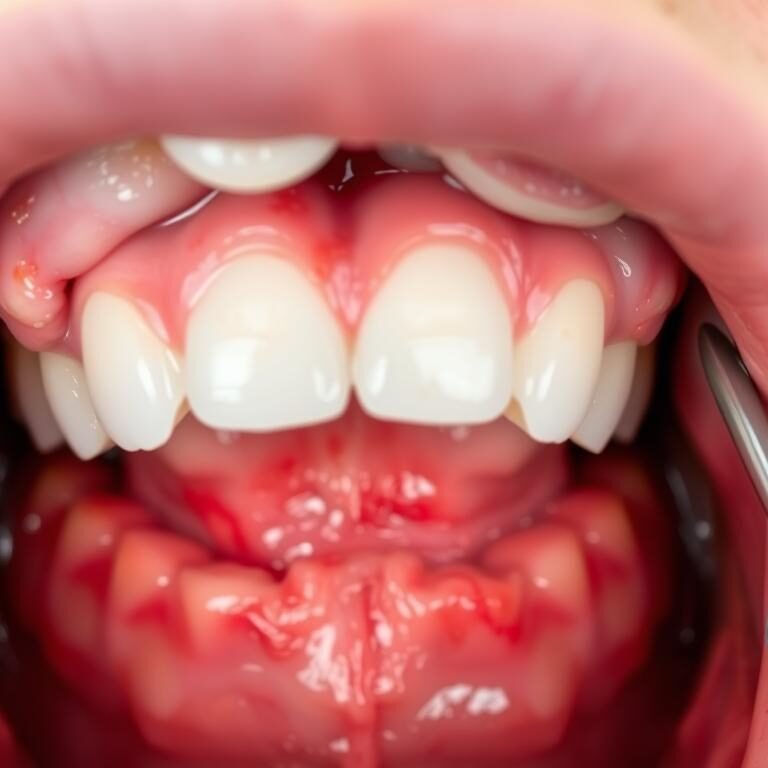Table of Contents
The Role of Food and Beverages in Teeth Staining
Certain food and beverages have long been associated with teeth staining. The pigments found in these items can adhere to the surface of the teeth, leading to noticeable discoloration over time. One common culprit is coffee, which is a favorite morning pick-me-up for many individuals. The dark color of coffee is due to compounds called tannins, which can easily stain the enamel. Similarly, tea, especially black tea, contains tannins and can also contribute to teeth staining.
Another beverage notorious for its staining potential is red wine. The intense color of red wine comes from pigmented molecules known as chromogens, which have a strong affinity for tooth enamel. Over time, these molecules can build up and cause unsightly stains. It’s worth noting that white wine, although not as deeply pigmented as red, contains acids that can weaken enamel, making teeth more susceptible to staining from other food and drinks.

In addition to these beverages, certain food choices can also impact tooth color. Dark-colored fruits and berries, such as blueberries and cherries, contain natural pigments that can stain teeth. Additionally, highly acidic foods like citrus fruits can erode the enamel, making teeth more vulnerable to staining from other sources. It’s important to maintain a balanced diet, including a variety of fruits and vegetables, while considering their staining potential and practicing good oral hygiene to minimize the effects of teeth staining caused by food and beverages.
The Impact of Tobacco on Tooth Discoloration
The use of tobacco products is not only detrimental to overall health but also contributes significantly to the discoloration of teeth. Tobacco contains numerous chemical compounds that can stain teeth, including nicotine and tar. These substances can infiltrate the enamel, the outer layer of the tooth, causing unsightly yellow or brown stains to develop. Furthermore, tobacco use can hinder saliva production, which plays a crucial role in keeping the mouth clean and reducing the formation of plaque and tartar. The combination of staining agents and reduced saliva flow creates an environment that promotes tooth discoloration and can be particularly challenging to reverse.
It is important to note that the negative effects of tobacco on tooth color are not limited to smokers. The use of smokeless tobacco products, such as chewing tobacco or snuff, can also lead to tooth discoloration. The prolonged contact between these products and the teeth, coupled with the staining agents they contain, can result in noticeable and persistent stains that are difficult to eliminate. Additionally, the heat from smoking and the direct contact of smokeless tobacco can cause gum irritation and recession, further compromising the appearance and health of the teeth.

In conclusion, tobacco use poses a significant risk to the natural color and overall oral health. The staining agents found in tobacco products, along with the reduced saliva flow associated with tobacco use, create ideal conditions for tooth discoloration to occur. Whether through smoking or the use of smokeless tobacco, individuals who use tobacco products should be aware of the potential consequences on their teeth and consider seeking dental advice and appropriate treatment options to minimize the effects of tobacco-induced tooth discoloration.
How Poor Dental Hygiene Contributes to Tooth Discoloration
Proper dental hygiene plays a crucial role in maintaining the natural color of our teeth. Failing to adhere to a consistent oral care routine can contribute to tooth discoloration over time. One of the primary causes of tooth staining due to poor dental hygiene is the buildup of plaque and tartar.
Plaque is a sticky film of bacteria that forms on the surface of teeth. When not removed through regular brushing and flossing, it hardens into tartar, which is more resistant to removal. Both plaque and tartar can trap staining substances from the food and beverages we consume, leading to discoloration. Additionally, inadequate oral hygiene can result in a higher risk of tooth decay and gum disease, which can further contribute to teeth staining. Regular brushing, flossing, and dental visits are essential to maintain healthy teeth and prevent discoloration caused by poor dental hygiene.
| Contributing Factor | Explanation |
|---|---|
| Plaque Buildup | Accumulation of bacteria and food particles on teeth surfaces, leading to yellowish stains |
| Tartar Formation | Hardened plaque that cannot be removed by brushing, causing brown or yellow discoloration |
| Consumption of Staining Foods & Beverages | Pigments in coffee, tea, wine, and certain fruits can adhere to tooth enamel, causing discoloration |
| Tobacco Use | Nicotine and tar in tobacco products can cause brown stains on teeth |
| Poor Oral Hygiene Practices | Inadequate brushing, flossing, and dental visits can result in discoloration due to plaque buildup |
| Medications | Some medications can cause teeth to darken or stain, particularly tetracycline antibiotics |
| Aging | Tooth enamel naturally wears down over time, revealing the yellowish dentin underneath |
The Effects of Aging on Tooth Color
As we age, it is natural for our teeth to undergo changes in color. One of the primary causes of tooth discoloration as we grow older is the gradual thinning of the outer layer of our teeth, known as enamel. Over time, the enamel becomes thinner, exposing the underlying layer of dentin, which is naturally yellow in color. As a result, our teeth can appear dull and less vibrant than they did in our youth.
Additionally, the cumulative effects of a lifetime of consuming certain foods and beverages can contribute to the darkening of our teeth as we age. Foods and drinks that are highly pigmented, such as coffee, tea, red wine, and dark berries, can stain the enamel surface over time. Also, habits like smoking or tobacco use can accelerate the discoloration process, leading to more noticeable yellow or brown stains on the teeth.
It is important to note that while tooth discoloration is a natural part of the aging process, it does not mean that we have to simply accept it. There are various professional teeth whitening treatments available that can help restore a brighter and more youthful appearance to our teeth. Consulting with a dentist can provide insight into the most suitable options based on individual needs and preferences.
Genetic Factors That Influence Tooth Staining
Tooth staining can be influenced by a variety of factors, and genetic predisposition is one such factor that plays a significant role. While proper oral hygiene and dietary choices are important for maintaining a bright and radiant smile, some individuals may find themselves more prone to tooth discoloration due to their genetic makeup.
Our genes encode the information that determines the color of our teeth, including the thickness and density of the tooth enamel. Enamel, the protective outer layer of the tooth, plays a vital role in preventing tooth staining. However, variations in our genes can affect the structural composition of enamel, making it more susceptible to discoloration.
A study published in the Journal of Dentistry found that certain gene mutations can lead to enamel defects, such as enamel hypoplasia and amelogenesis imperfecta, both of which can cause tooth staining. These conditions can result in enamel that is thinner, weaker, or improperly formed, making it easier for stains to penetrate and discolor the teeth.
It’s important to note that genetic factors alone don’t guarantee tooth staining, as lifestyle choices and environmental factors also play a role. However, understanding the genetic influence on tooth staining can help individuals take proactive steps to minimize its impact and maintain a bright and vibrant smile.
References:
– Smith, C.E. Cellular and chemical events during enamel maturation. Crit Rev Oral Biol Med. 1998;9(2):128-161.
– Dahllöf, G., et al. Enamel defects in deciduous teeth of Swedish children with amelogenesis imperfecta. J Oral Pathol Med. 1989;18(2):107-114.
The Link Between Medications and Teeth Discoloration
It’s no secret that teeth can change in color over time, and one contributing factor to tooth discoloration is the use of certain medications. Many commonly prescribed drugs can have an impact on the color of our teeth, leaving them stained or discolored. This can be a concern for individuals who rely on medication to manage their health conditions but still want to maintain a bright and healthy smile.
One group of medications known to cause teeth discoloration is tetracycline and its derivatives. These antibiotics are commonly used to treat a range of bacterial infections. However, when given to children whose teeth are still developing, tetracycline can lead to permanent discoloration known as “tetracycline staining”. This occurs because tetracycline becomes incorporated into the structure of the developing teeth, resulting in dark gray or brownish stains.
| Medication | Possible Teeth Discoloration? |
|---|---|
| Tetracycline | Yes |
| Minocycline | Yes |
| Doxycycline | Yes |
| Antihistamines | Rarely |
| Antipsychotics | Rarely |
| Antidepressants | Rarely |
| Antihypertensives | Rarely |
| Chemotherapy Drugs | Yes |
| Iron Supplements | Yes |
| Certain Antibiotics | Yes |
Another class of medications that can cause tooth discoloration are antihistamines, which are often used to relieve allergy symptoms. Some antihistamines contain ingredients, such as chlorpheniramine, that have been shown to cause teeth staining with long-term use. The discoloration caused by antihistamines typically appears as brown or yellow stains on the teeth.
Overall, it’s important for healthcare professionals to be aware of the potential impact of medications on teeth discoloration. Patients should also communicate with their dentists and doctors about any concerns they have regarding the effects of their medications on the color of their teeth. With proper understanding and management, it is possible to minimize the impact of medications on tooth discoloration and maintain a healthy smile.
Understanding the Role of Fluoride in Teeth Staining
Fluoride is a mineral that plays a crucial role in maintaining dental health. It is commonly found in toothpaste, mouth rinses, and even some drinking water. While fluoride is known for its ability to prevent tooth decay, some individuals may wonder whether it can also contribute to tooth staining.
Tooth staining occurs when substances, such as pigmented foods and drinks, adhere to the enamel surface of the teeth. However, studies have shown that fluoride itself does not directly cause tooth discoloration. In fact, fluoride has been found to have a protective effect against stains by strengthening the enamel and making it more resistant to discoloration. It helps to form a strong outer layer on the teeth, preventing the absorption of pigmented compounds that can lead to staining.
It is important to note that excessive fluoride intake, particularly during childhood, can result in a condition known as dental fluorosis. This condition causes changes in the appearance of the enamel, including white lines, spots, or streaks. However, dental fluorosis is a cosmetic issue and does not typically cause tooth discoloration in the same way that stains from foods or beverages do.
In conclusion, while fluoride does not directly contribute to tooth staining, it plays a critical role in protecting the teeth from stains by strengthening the enamel. It is essential to maintain a balance in fluoride intake to prevent dental fluorosis while reaping the benefits of this mineral in promoting dental health.
The Connection Between Dental Trauma and Tooth Discoloration
Dental trauma refers to injuries that affect the teeth and surrounding structures as a result of accidents, falls, or sports-related mishaps. While immediate concerns such as pain and fractures are often the focus, it’s important to recognize that dental trauma can also lead to tooth discoloration. The impact of trauma can disrupt the blood supply to the affected tooth, leading to internal bleeding and subsequent discoloration.
When dental trauma occurs, the tooth may undergo a process known as pulp canal obliteration, where the pulp tissue inside the tooth becomes calcified. This can cause the tooth to appear discolored, typically taking on a gray or yellowish hue. The severity of the discoloration can vary depending on the extent of the trauma and the individual’s healing response.

Tooth discoloration resulting from dental trauma can be emotionally distressing, particularly when it affects visible teeth. It is important to seek prompt dental evaluation and treatment following any traumatic incident to mitigate potential long-term effects. By addressing dental trauma in a timely manner, dentists can provide appropriate interventions to minimize discoloration and restore the aesthetic appearance of the affected tooth.
The Influence of Excessive Fluoride on Tooth Color
Excessive fluoride intake can have a significant impact on the color of our teeth. While fluoride is essential for maintaining healthy teeth, too much can lead to a condition known as dental fluorosis. This condition causes white or brown stains to appear on the teeth, resulting in a less aesthetically pleasing smile.
Dental fluorosis occurs when developing teeth are exposed to high levels of fluoride, typically during childhood. The excessive fluoride disrupts the process of enamel formation, leading to the development of these stains. The severity of dental fluorosis can vary, with mild cases featuring barely noticeable white spots and more severe cases resulting in dark brown stains.

It’s important to note that dental fluorosis is primarily a cosmetic issue and does not cause any functional problems or affect the health of the teeth. However, for those concerned about the appearance of their teeth, it can be a source of self-consciousness. This is especially relevant for individuals living in areas with naturally high fluoride levels in the water supply, as excessive fluoride intake can occur inadvertently. In such cases, it may be necessary to consider alternative sources of drinking water to reduce fluoride intake and prevent or minimize the occurrence of dental fluorosis.
How Teeth Staining Can be a Result of Enamel Erosion
Enamel erosion is a common dental problem that can lead to teeth staining. The outer layer of our teeth, known as enamel, provides a protective barrier against bacteria and acids. However, certain factors can cause this protective layer to wear away, resulting in enamel erosion.
One of the primary culprits of enamel erosion is acid erosion. This occurs when the acidic content from our diet, such as citrus fruits, carbonated drinks, and vinegar-based foods, come into contact with the teeth. Over time, the repeated exposure to acid weakens the enamel and causes it to erode. As the enamel wears away, the underlying dentin, which is naturally yellow in color, becomes more visible, resulting in teeth that appear stained or discolored.
Another factor that contributes to enamel erosion and subsequent teeth staining is tooth grinding or bruxism. The constant grinding or clenching of teeth can wear down the enamel, making it more susceptible to staining. Additionally, individuals with a habit of using their teeth as tools, for instance, biting nails or opening packages, also put their enamel at risk of erosion and staining.
To prevent enamel erosion and subsequent teeth staining, it is crucial to practice good oral hygiene, including brushing your teeth twice a day with a soft-bristled brush and using fluoride toothpaste. It is also advisable to avoid acidic foods and beverages, or at least rinse your mouth with water afterward to minimize the acid’s impact on your teeth. If you suspect that you grind your teeth or engage in habits that may contribute to enamel erosion, consulting with a dentist can help identify appropriate interventions to protect your enamel and prevent teeth staining.
The Effects of Certain Health Conditions on Tooth Discoloration
Tooth discoloration is a common dental concern that can be influenced by various factors, including certain health conditions. It’s important to understand how these conditions can affect the color of our teeth, as it can help us take necessary preventive measures and seek appropriate treatment.
One health condition that can contribute to tooth discoloration is enamel hypoplasia, which is characterized by the incomplete formation of tooth enamel. This condition can result in the appearance of brown or yellow spots on the teeth, making them appear discolored. Enamel hypoplasia can be caused by factors such as nutritional deficiencies, infections, or certain medications taken during tooth development.
Another health condition that can impact tooth color is dental fluorosis. This condition occurs when excessive fluoride is ingested during tooth development, leading to the mineralization of enamel. As a result, white lines, spots, or streaks may appear on the teeth. Although fluorosis is not harmful to dental health, it can cause significant aesthetic concerns. This condition is more prevalent in areas with high fluoride levels in drinking water or in individuals who consume excessive amounts of fluoride-rich products.
It is crucial to consult with a dental professional who can provide an accurate diagnosis and appropriate treatment for any dental discoloration. Understanding the effects of certain health conditions on tooth discoloration is a fundamental step towards maintaining a healthy and bright smile. (172 words)
Understanding the Role of Dental Restorations in Tooth Staining
Dental restorations play a crucial role in the overall health and appearance of our teeth. However, it is important to understand that these restorations can also contribute to tooth staining. Whether it be dental fillings, crowns, veneers, or other types of restorations, their materials and composition can have an impact on the color of our teeth.
One common cause of tooth staining from dental restorations is the use of certain materials that may darken or discolor over time. For example, amalgam fillings, which are made of a mixture of metals, can cause a grayish or blackish hue to appear on the tooth surface. Similarly, porcelain veneers or crowns that have aged or become damaged may develop stains or discoloration that affects the overall appearance of the tooth.
Additionally, the placement of dental restorations can also contribute to tooth staining. When a restoration is not properly fitted or sealed, it can create small gaps or crevices where bacteria and food particles can accumulate. Over time, these trapped substances can cause the restoration and surrounding tooth enamel to become discolored.
Understanding the role of dental restorations in tooth staining is essential for both dental professionals and patients. By being aware of the potential impact of restorations on the color of our teeth, we can take proactive steps to prevent and address staining issues. Regular dental check-ups, proper oral hygiene practices, and regular cleaning and maintenance of dental restorations can go a long way in preserving the natural beauty of our smiles.
Preventing Tooth Discoloration Through Effective Oral Hygiene Practices
Maintaining a bright and pristine smile is a priority for many individuals, and preventing tooth discoloration is an essential aspect of achieving this goal. By adopting effective oral hygiene practices, you can significantly reduce the risk of tooth staining and preserve the natural brilliance of your teeth. Regular brushing and flossing are fundamental steps in preventing plaque buildup, which can contribute to discoloration. Brushing at least twice a day with a fluoride toothpaste and using a soft-bristled toothbrush will help remove surface stains and maintain the overall health of your teeth.
In addition to regular brushing, incorporating daily flossing into your oral hygiene routine can further prevent tooth discoloration. Flossing allows you to remove plaque and food particles from between the teeth and along the gumline, where they tend to accumulate and cause staining. By thoroughly cleaning these areas, you can reduce the chances of developing unsightly stains and promote optimal oral health. Moreover, using an antimicrobial mouthwash as directed by your dentist can provide an extra layer of protection against bacteria, plaque, and staining agents, helping to maintain the pristine appearance of your teeth.
The Role of Professional Teeth Whitening Treatments in Combating Tooth Discoloration
Professional teeth whitening treatments play a significant role in combating tooth discoloration and achieving a whiter, brighter smile. These treatments are not only effective but also safe when performed under the supervision of a qualified dentist or dental professional.
Professional teeth whitening procedures utilize powerful bleaching agents that are specifically designed to remove stubborn stains and restore the natural color of teeth. Unlike over-the-counter whitening products, professional treatments are customized to meet individual needs and provide more noticeable and long-lasting results. The concentration of the bleaching agents used in professional treatments is higher, allowing for a more intensive and targeted approach to stain removal. Additionally, the application of these treatments is carefully monitored to prevent any potential damage to the gums and surrounding tissue.
In conclusion, professional teeth whitening treatments are a reliable and efficient solution for combating tooth discoloration. By seeking the expertise of a dental professional, individuals can expect safe and effective results that surpass the limitations of over-the-counter products. With professional care, achieving a brighter and more confident smile is within reach.
Natural Remedies and Homecare Techniques for Preventing Tooth Stains
To maintain a bright and dazzling smile, it is important to adopt natural remedies and homecare techniques for preventing tooth stains. These simple yet effective methods can help to preserve the color of our teeth and prevent discoloration over time.
One of the most basic practices for preventing tooth stains is to ensure proper oral hygiene. This includes brushing your teeth twice a day with a fluoride toothpaste and flossing daily to remove plaque and food particles that can contribute to staining. Additionally, using a mouthwash that contains hydrogen peroxide or chlorhexidine can help to inhibit the growth of bacteria and prevent the formation of plaque.
Incorporating certain dietary habits can also promote a brighter smile. Avoiding or minimizing the consumption of foods and beverages that are known to stain teeth, such as coffee, tea, red wine, and highly pigmented fruits and vegetables, can make a significant difference. It is also advisable to drink water after consuming these foods and beverages to wash away any remaining pigments and reduce their potential staining effects.
By adopting these natural remedies and homecare techniques, we can take proactive steps towards preventing tooth stains and maintaining a radiant smile. However, it is important to consult with a dental professional for personalized advice and treatments to address specific concerns or existing dental discoloration.
How can certain health conditions affect tooth discoloration?
Certain health conditions, such as diabetes and liver disease, can cause tooth discoloration due to the medications and treatments involved in managing these conditions. Additionally, conditions that affect enamel development, such as amelogenesis imperfecta, can also contribute to tooth discoloration.
Can dental restorations contribute to tooth staining?
Yes, dental restorations such as fillings and crowns can become discolored over time, especially if they are made from materials that are prone to staining, like composite resin. Regular dental check-ups can help identify any staining on restorations and prompt necessary maintenance or replacement.
Are there any natural remedies or homecare techniques that can prevent tooth stains?
Yes, there are several natural remedies and homecare techniques that can help prevent tooth stains. These include regular brushing and flossing, using baking soda as a mild abrasive, oil pulling with coconut oil, and consuming certain foods like apples, carrots, and celery that naturally clean and whiten teeth.
Can tooth discoloration be caused by enamel erosion?
Yes, tooth discoloration can be a result of enamel erosion. When the protective enamel layer of the tooth wears away, the underlying dentin, which is naturally yellowish, becomes more visible, leading to a change in tooth color.
How does excessive fluoride influence tooth color?
Excessive fluoride consumption during tooth development can lead to a condition called fluorosis, which can cause tooth discoloration. This typically appears as white or brown streaks or spots on the teeth.
What role does fluoride play in tooth staining?
Fluoride, when used appropriately, actually helps prevent tooth staining. It strengthens the enamel and makes it more resistant to the acid attacks that can lead to staining. Fluoride also helps to remineralize the teeth and prevent the formation of stains.
Can dental trauma result in tooth discoloration?
Yes, dental trauma, such as a blow to the mouth or a severe fall, can cause tooth discoloration. Trauma can damage the blood vessels inside the tooth, leading to the accumulation of blood or other substances that can darken the tooth color.
How do professional teeth whitening treatments combat tooth discoloration?
Professional teeth whitening treatments, performed by a dentist, use bleaching agents to remove surface stains and lighten the color of teeth. This can effectively combat tooth discoloration caused by various factors such as food and drink, tobacco, aging, and poor dental hygiene.
Can genetic factors influence tooth staining?
Yes, genetic factors can influence tooth staining. Some individuals may naturally have thinner enamel or a greater predisposition to certain types of staining, such as intrinsic stains. However, maintaining good oral hygiene practices can still help minimize the impact of genetic factors on tooth discoloration.










